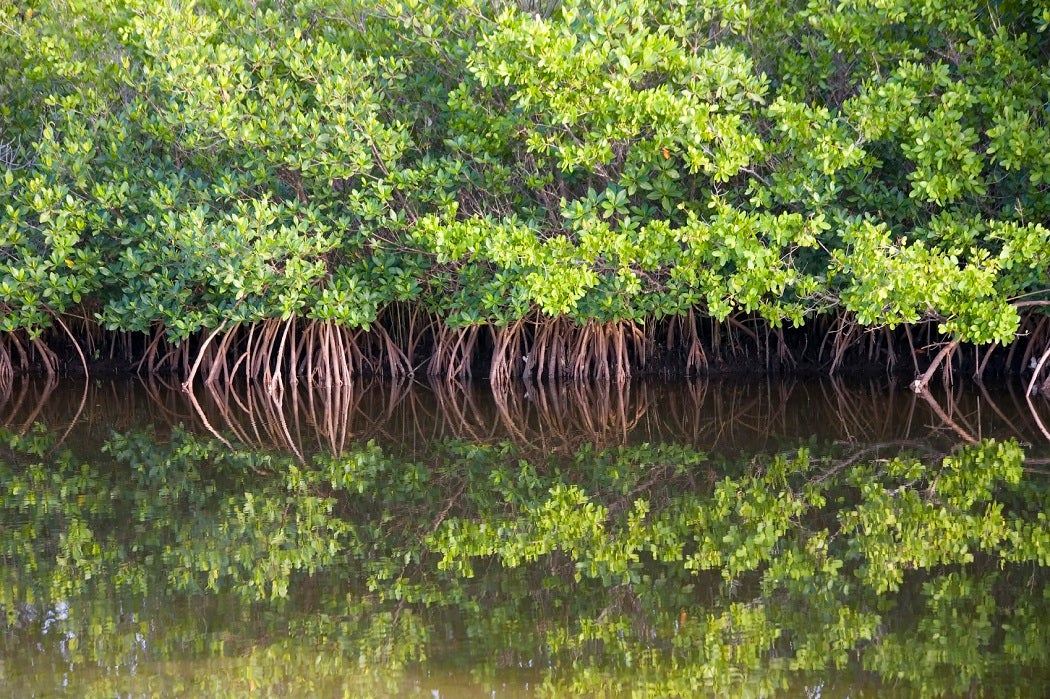When the city of Miami wanted to host a boat show, they decided to level a stand of mangrove trees to make room, enraging local residents. Mangroves cover most of the world’s tropical shorelines but are one of the least understood and appreciated tropical habitats.
Even without the boats, mangroves face severe threats, cleared for aquaculture, charcoal, misguided attempts at mosquito control, or, as in Miami, simply because they are in the way. The rate of loss is so severe that a 2001 study by Ivan Valiela et al. concluded that mangrove loss had exceeded 35%, a total far surpassing grievous losses of tropical forest and coral reef.
Mangroves are, simply put, unpopular, suffering from an undeserved reputation for filth and danger. It’s a real pity. If you scratch beneath the surface, you’ll find that mangrove forests are a fascinating, beautiful ecosystem. If nothing else, these forests provide many benefits to humans.
Mangroves are almost unique in their ability to tolerate salty soil. Some species, like the red mangroves cleared in Miami, actually live partially submerged in the ocean, with their long roots extending downward to the shallow sea floor. In these areas of dense, entangled roots beneath the mangrove canopy, a whole new world appears. As noted in the 2001 paper, many commercially valuable species of fish utilize the mangrove during their life cycle, and mangroves enhance offshore fisheries.
Plunge into the water at the mangrove edge, and you’ll see abundant juvenile crustaceans, not to mention all manner of fishes, making the roots their home. (Plunge in without looking and you might come face to snout with a crocodile.) Colorful sponges, anemones, and countless other plants and animals grow on or between the roots.
As if that weren’t enough reason to leave the forests alone, the monetary and public safety value of the services provided by mangroves is substantial. Mangroves are not typically the tallest trees around but they are very productive, storing an unknown but substantial amount of carbon.
Even more crucially, mangroves protect coastlines from erosion by trapping sediment among the dense roots. This works both ways, so the sediment is also prevented from entering the ocean and fouling coral reefs.
Mangroves have even been proven to save lives, providing a natural barrier against catastrophic waves from tsunamis or hurricanes. Taken together, all the intangible benefits aside, the estimated monetary value of mangrove forests is more than $6,500/acre, but the true value is incalculable. As long as the mangroves are alive, the benefits never stop accruing. Let’s see a boat show top that.







